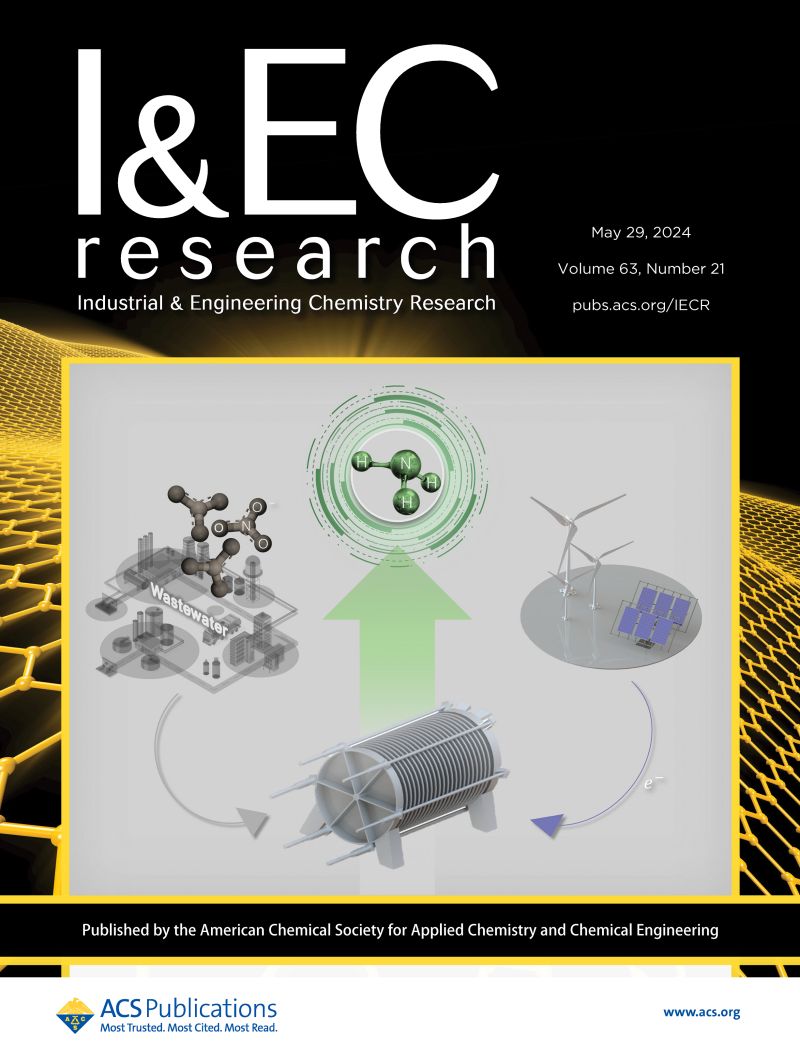Coupled Deep Neural Network Model with CFD for Predicting the Heat Transfer Coefficient in Fluidized Beds
IF 3.8
3区 工程技术
Q2 ENGINEERING, CHEMICAL
引用次数: 0
Abstract
Coupled transport processes are very complex in fluidized beds. Several prior CFD and experimental studies for the estimation of the heat transfer coefficient were conducted under certain fixed operating conditions and material properties in previous decades. Given that experimental measurements are often expensive, there is an urgent need to reduce the simulation time of the existing CFD models. This study applies the CFD-aided deep neural network (CFD-DNN) architecture to estimate the volumetric heat transfer coefficient using available correlations for the Nusselt number (Nup). In addition, a comprehensive model to estimate the local heat transfer coefficient of particles under different Reynolds numbers (Rep), Prandtl numbers (Prf), and voidage conditions is also developed. The computing time decreased by 7% for the 2D case and 18% for the 3D scenario, while the coefficient of determination (COD) value reached 0.9995 when calculating the volumetric heat transfer coefficient. The results show that the DNN model not only has superior learning capability but also reduces the computational time with adequate accuracy. Also, the CFD-DNN-based Nu model coupled with CFD gave a reasonable prediction of the volumetric heat transfer coefficient between gas–solid phases, demonstrating good applicability to a wide range of fluidization conditions. This model is adaptable and reliable for industrial applications regardless of the particle shape. Expanding to a broader range of particle sizes and large-scale simulations further enhances its applicability, improving drying efficiency in multiphase heat and mass transfer, particularly in the pharmaceutical industry.

深度神经网络模型与CFD耦合预测流化床传热系数
流化床中的耦合输运过程非常复杂。在过去的几十年里,一些计算传热系数的CFD和实验研究都是在一定的固定工况和材料性能下进行的。由于实验测量的成本往往很高,因此迫切需要减少现有CFD模型的模拟时间。本研究应用cfd辅助深度神经网络(CFD-DNN)架构,利用可用的努塞尔数(Nup)相关性来估计体积传热系数。此外,还建立了在不同雷诺数(Rep)、普朗特数(Prf)和空隙条件下的颗粒局部换热系数的综合模型。在二维和三维情况下,计算时间分别减少了7%和18%,而在计算体积换热系数时,COD值达到0.9995。结果表明,DNN模型不仅具有优越的学习能力,而且在足够的精度下减少了计算时间。基于CFD- dnn的Nu模型与CFD相结合,对气固两相间的体积换热系数进行了合理的预测,显示出良好的适用性,适用于广泛的流化条件。无论颗粒形状如何,该模型都适用于工业应用。扩展到更广泛的粒径范围和大规模模拟进一步增强了其适用性,提高了多相传热和传质中的干燥效率,特别是在制药行业。
本文章由计算机程序翻译,如有差异,请以英文原文为准。
求助全文
约1分钟内获得全文
求助全文
来源期刊

Industrial & Engineering Chemistry Research
工程技术-工程:化工
CiteScore
7.40
自引率
7.10%
发文量
1467
审稿时长
2.8 months
期刊介绍:
ndustrial & Engineering Chemistry, with variations in title and format, has been published since 1909 by the American Chemical Society. Industrial & Engineering Chemistry Research is a weekly publication that reports industrial and academic research in the broad fields of applied chemistry and chemical engineering with special focus on fundamentals, processes, and products.
 求助内容:
求助内容: 应助结果提醒方式:
应助结果提醒方式:


